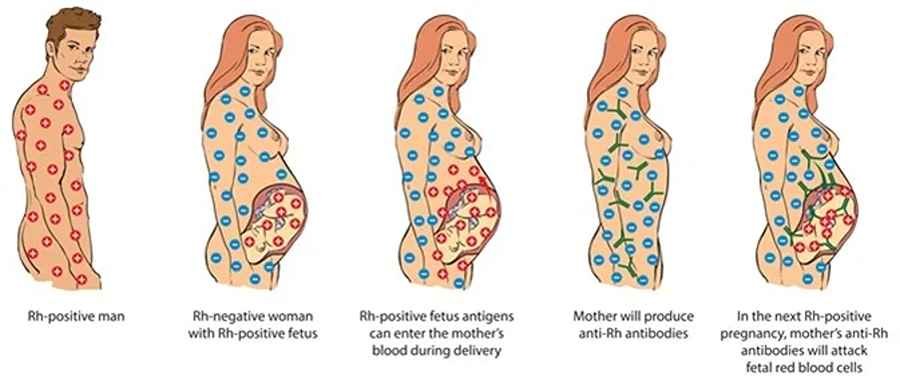In mainstream interactions, we hear a lot of vague discussions about blood grouping, which include compatibility-related discussions, feeding habits based on blood group, disease affiliations, and immunity, among many others.
These may not be wrong, but they are mostly treated out of context and as mere assumptions.
This vague understanding has led to the wrong use of the term and the essence of its concept.
In this article, we shall give illumination on the subject to reposition the true picture and relevance of blood grouping.
What is a blood group?
This is not a piece of reserved information to be kept within the cycle of medical personnel.
It should be handy knowledge for everyone who keeps their health efficiently relevant.
To answer that, a few terminologies need to be clear.
- Antigen: The American Diabetes Association and National Institute of Diabetes and Digestive and Kidney Diseases define antigens as substances that cause an immune response in the body by identifying implications in or markers on cells. Your body produces antibodies to fight antigens or harmful substances and tries to eliminate them.
- Antibody: also called immunoglobulin, is a protective protein produced by the immune system in response to the presence of a foreign substance called an antigen. Antibodies recognize and latch onto antigens to remove them from the body. The body regards a wide range of substances as antigens, including disease-causing organisms and toxic materials such as insect venom.
- Red Blood Cells (RBCs): Red blood cells, also called erythrocytes, are cellular components of the blood, millions of which, in the circulation of humans, give the blood its characteristic color and carry oxygen from the lungs to the tissues. The mature human red blood cell is small, round, and biconcave; it appears dumbbell-shaped in profile.
Putting these ingredients into perspective, blood grouping is the classification of blood type based on the type of antigen on the surface of an individual’s RBCs.
Types of Blood Group

The two most important blood group systems are ABO and Rh; they determine someone’s blood type (A, B, AB, and O, with + and − denoting Rh status) for suitability in blood transfusion.
There are other systems of blood grouping, such as Bombay Grouping, Duffy, Lewis, etc., that are neither common nor applicable in everyday scenarios.
1. ABO Grouping System
In 1901, Karl Landsteiner, an American biologist, discovered the human ABO blood groups.
Landsteiner found that there are substances in the blood, such as antigens and antibodies, that induce the clumping of red cells when red cells of one type are added to those of a second type.
He recognized three groups, A, B, and O, based on their reactions to each other.
A fourth group, AB, was identified a year later by another research team.
Red cells of the A group clump with the donor blood of the B group; those of the B group clump with the blood of the A group; those of the AB group clump with those of the A or the B group because AB cells contain both A and B antigens; and those of the O group do not generally clump with any group because they do not contain either A or B antigens.
The application of knowledge of the ABO system in blood transfusion practice is of enormous importance since mistakes can have fatal consequences.
| Group A | Group B | Group AB | Group O | |
| RBC Type | A | B | A B | O |
| Antibodies | B | A | None | A B |
| Antigens | A | B | A B | None |
As illustrated in the above table, blood group type A has “A” antigens and would produce antibodies against any entity other than antigen A.
Therefore, the introduction of B antigens will naturally trigger the production of antibodies “B” to treat the foreign intrusion.
2. Rhesus Factor Grouping System (Rh)
Rhesus factor, also known as Rh factor, is a type of protein found on the outside of red blood cells.
The protein is genetically inherited.
If you have the protein, you are Rh-positive.
If you did not inherit the protein, you are Rh-negative.
The majority of people, about 85%, are Rh-positive.

This protein does not affect your overall health, but it is important to know your Rh status if you are pregnant.
Rh factor can cause complications during pregnancy if you are Rh-negative and your child is Rh-positive.
When the father is Rh+ and the mother is Rh-, the child will have Rh+ in his blood.
Picture an Rh mother housing an Rh+ child.
At birth, there is a possibility of blood interaction that makes the body of the mother detect Rh+ and begin producing antibodies against it.
Medically, she is sensitized.
Further complications are possible in subsequent pregnancies.
Compatibility Based on ABO and Rh Systems
Combining the grouping system entails that attention is given to both the ABO system and the Rhesus factor simultaneously.
Suitability is achieved when both principles are respected when considering a donor.
The table below will be helpful.
| O- | O+ | B – | B + | A – | A + | A B – | A B + | |
| O – | Suitable | |||||||
| O + | Suitable | Suitable | ||||||
| B – | Suitable | Suitable | ||||||
| B + | Suitable | Suitable | Suitable | Suitable | ||||
| A – | Suitable | Suitable | ||||||
| A + | Suitable | Suitable | Suitable | Suitable | ||||
| AB – | Suitable | Suitable | Suitable | Suitable | ||||
| AB+ | Suitable | Suitable | Suitable | Suitable | Suitable | Suitable | Suitable | Suitable |
Conclusion
Blood group is a type of uniqueness we possess biologically; paying attention to it is worth the investment.
The aspect of compatibility is central to every discussion about blood grouping.
- Every individual needs to be doubly sure that entries about blood groups on any document should be from an approved medical testing center.
- Health facilities should never compromise on confirming the exact blood type before any transfusion, either on the side of the donor or the recipient.
- Blood group testing methods should be affordable, accessible, and less tasking
- Information materials should be in circulation in simple terms
Caleb Isa El-Bumba
Experienced Nutrition expert with over 5 years of experience in child health. Excellent reputation for resolving problems, improving customer satisfaction, and driving overall operational improvements. Consistently saved costs while increasing profits. Recognized consistently for excellent performance and contributions to success in the industry. Strengths in pro-activity and productivity backed by training in the relevant field.



